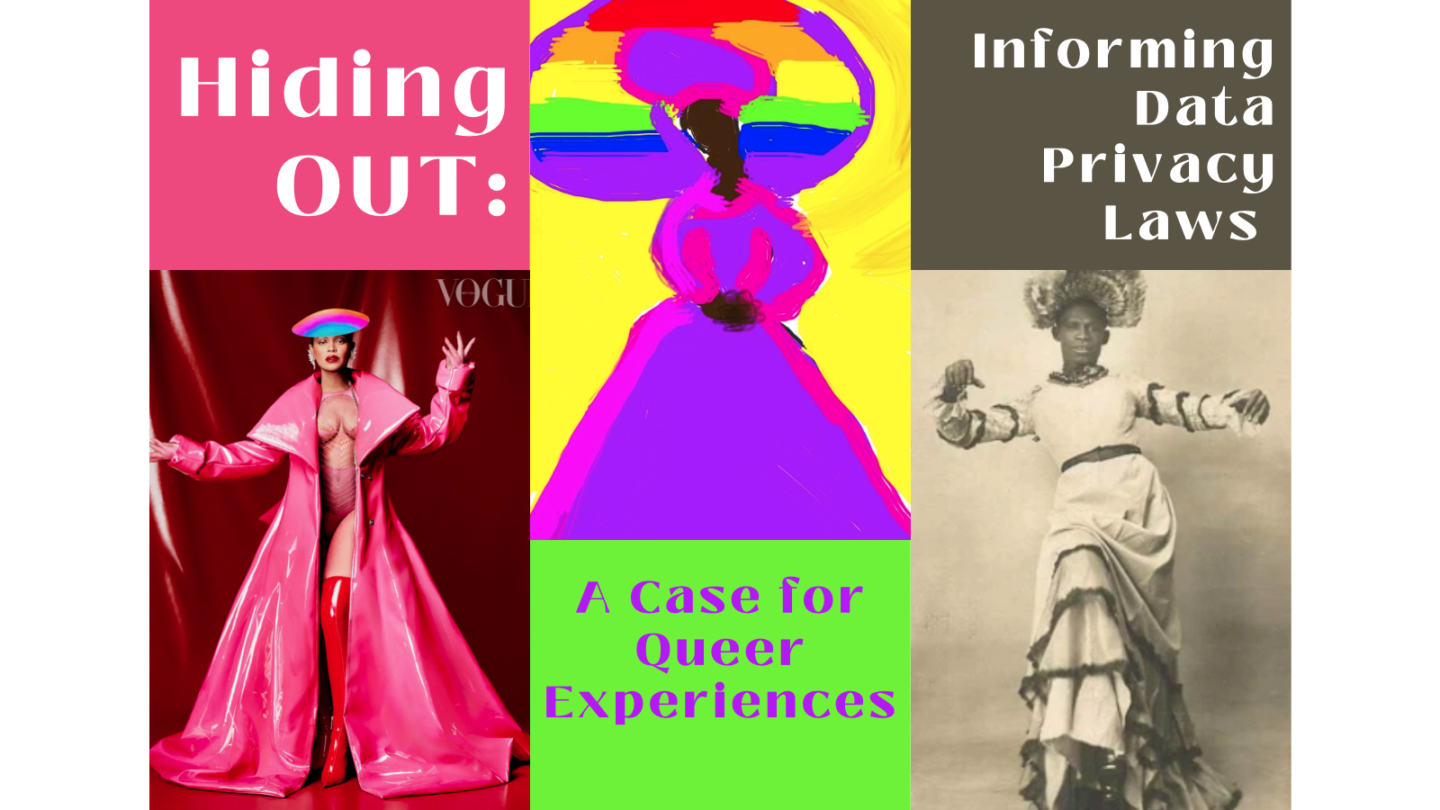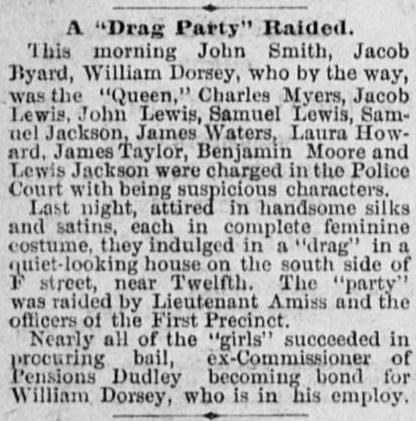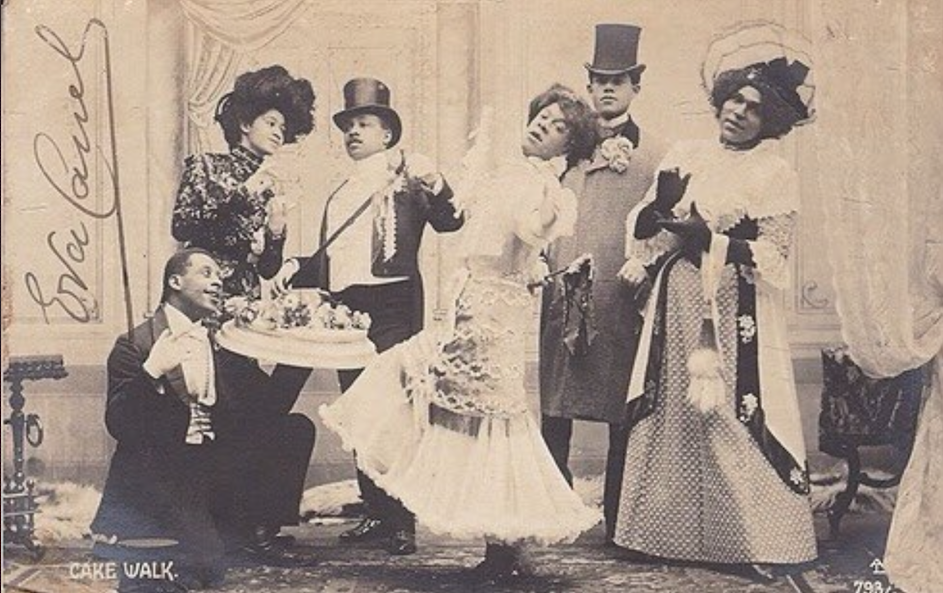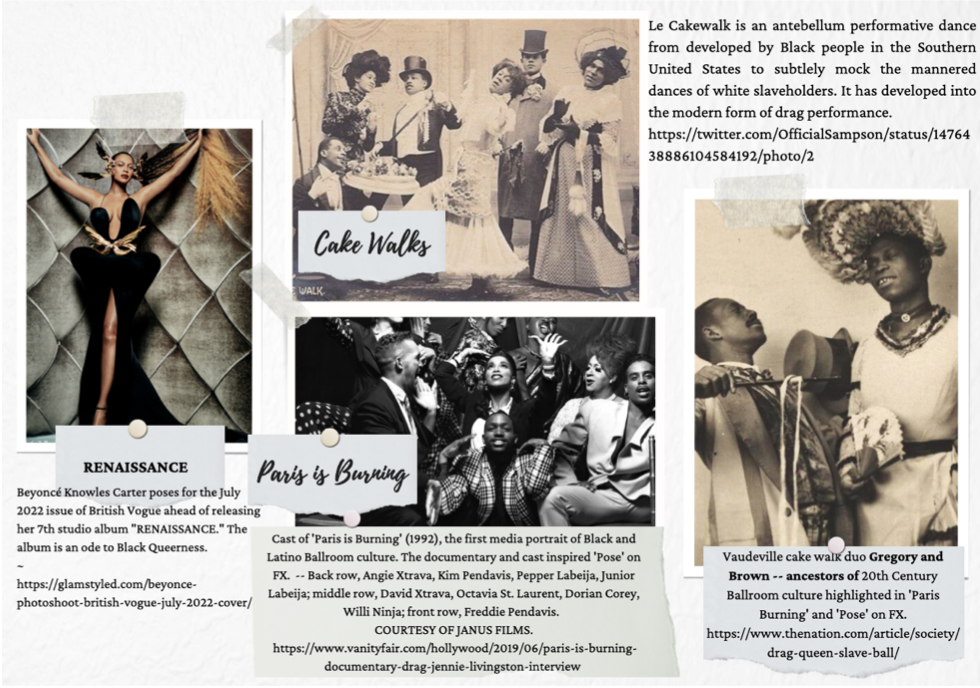
Who knew that Pride Month would reverberate from June to August with Beyoncé’s “Renaissance,” her seventh studio album?! Music critic Craig Jenkins dons the album “a master class in Black music studies” for how it showcases the queer Black people and sub-cultures. He informs “[a]nyone who needs to push the dials in popular culture knows to come to the bleeding edge, to bask in the richness of the Black queer imagination, where… a fluid experience of gender, sounds and words and fashions take on exciting new forms.” The Divas of Ballroom performance culture, gospel, house, and t/rap shove us off “the bleeding edge” of cultural (re)invention. Jenkins explains that, “Divas are loved in queer spaces because they exude and inspire magnificence, radiating a confidence that is infectious. We live vicariously through their elegance; our enthusiasm drives them all the more. It’s an electrical circuit, but the current is powering a futuristic… architecture.” (Listen to Beyoncé & Madonna’s Break My Soul Queens Remix for a list of culture-shattering Divas!)
Divas should not just lead in performative arts. They can also lead in creating public policy. Award-winning journalist Channing Gerard Joseph introduces us to “The Queen” William Dorsey Swann, America’s first known Diva, a legendary drag queen of 19th century Le Cakewalk Balls. He explains that “Swann endured slavery, the Civil War, racism, police surveillance, torture behind bars, and many other injustices. But beginning in the 1880s, he not only became the first American activist to lead a queer resistance group; he also became, in the same decade, the first known person to dub himself a ‘queen of drag.’” Ms. Queen Swann’s life mirrors the injustices like governmental and corporate surveillance, politicized disdain, and violence that queer people still face in America, 170 years later. Yet, just as Ms. Queen Swann led protests and legal challenges against queerphobia in the 19th century, her experience can even now inform how we write our first comprehensive federal consumer privacy law.
Though scholars have suggested approaches to assuring queer privacy against government intrusion, I am positing that lawmakers should implement consumer data privacy laws that center queer experiences such that all people in America enjoy maximum privacy against the government and corporate intrusion. In fact, I encourage lawmakers and privacy advocates to employ queer experiences as an analytical tool to test whether an informational privacy law sufficiently protects people’s decisional privacy and other sensitive lifestyle choices. First, let’s explore the challenges of being queer in the United States. Then we will discuss how the internet has become the principal medium of affirmation, possibility, and refuge from the harsh realities of queer existence. Finally, we will recommend provisions that federal and state legislations should include to “queerify privacy” and maximally protect everyone’s constitutional zones of privacy, civil liberties, and civil and human rights.

The Harsh Realities of the American Queer Experience
There is no one queer experience among the 48 million LGBTQIA2S+ people in the United States – no one way to live, to love, to look, nor to perform queerness. However, historic increases in anti-queer murders, hate crimes, terrorist attacks, legal disenfranchisements, and political movements that give rise to vilification, discrimination, and violence mark the experiences of queerness [from the days of] the American Plantation through to the queer experiences of today.
Anti-queer hate crimes are at an all-time high. Murders of transgender and gender-nonconforming people have skyrocketed year over year since 2016. According to California State University’s Center for the Study of Hate and Extremism, hate crimes against queer people, especially queer men, rose by 51.3% since 2021. Between 2020 and 2021, Philadelphia witnessed a 230% increase in hate crimes; New York suffered through a 96% increase; and Los Angeles felt a 71% increase along with two other “liberal California cities.” The Center grimly forecasts “a turbulent year-end 2022 may be ahead” because “historically, in midterm election years, hate crimes almost always peak… much later in the year – often in September and October.” Just a few weeks ago, 31 members of one of the country’s largest white supremacist groups were arrested before executing their plan to violently attack an Idaho Pride event.
Domestically, anti-queer political rhetoric and legislative proposals are strong indicators of this decade’s dark anti-queer turn. In 2021, the Human Rights Campaign tracked 25 anti-LGBTQ enacted laws, including 13 anti-transgender laws across eight states, and the introduction of 130+ anti-transgender bills introduced across 33 states. But those numbers are already “so last year.” More than 320 anti-LGBTQ bills have been proposed in 2022, and most of them target trans people – up from 41 bills in all of 2018. See HRC’s live map of anti-queer legislation rising weekly. Further, old tropes of queer and trans people being “groomers” and “pedophiles” are finding new life in the fully funded right-wing anti-queer movement.
Outside the United States, anti-queer laws are popping up around the world. According to a recent Human Rights Watch report, 69 countries criminalize same-sex relations between consenting adults… and at least nine countries now criminalize forms of gender expression that target transgender and gender-nonconforming people. Queer people of African, Caribbean, Asian, and Middle Eastern national origin located here in the U.S. greatly risk religious condemnation, cultural ex-communication, and even inter-community violence if they are outed to family or friends. Further, prejudiced health agencies around the world are medicalizing queerphobia again by scapegoating Africans and gay/bisexual men as hypersexual transmitters of monkeypox – reminiscent of the medical profession’s HIV/AIDS faux-pas in 1980s and 90s.
Queer people face disproportionate socioeconomic disadvantage and medical neglect amid rising anti-queer violence and political movements. Most LGBTQIA2S+ people reported experiencing discrimination in public spaces, at work, in school, in apartment communities, during law enforcement interactions, and in other places of public accommodation. They experience greater difficulties in getting necessary medical treatment due to discrimination, cost-prohibitive healthcare, and high un/under-employment. People reported high levels of discrimination in access to essential life-making services like the ability to pay rent or buy a home; to receive an education; and to obtain government identification documents. One-third of queer people, including queer People of Color, reported experiencing employment discrimination within the last year. In fact, 65% of queer Americans hid their relationships or otherwise changed their behavior to avoid discrimination based on their sexual orientation within the previous year. Affected people made decisions about where to work, changed the way they dressed or gesticulated, avoided houses of worship, avoided restaurants and other places of public accommodation, moved away from family, avoided law enforcement, moved from rural areas, made educational decisions, avoided doctors’ offices, avoided getting services for themselves or family members, avoided travel, and postponed adding children to their families to avoid discrimination and aggression.
Near-death experiences have become an informal rite of passage for many queer people. Ubiquitous queerphobic discrimination has detrimental impacts on the psychological well-being of queer people of all ages. One in five adults reported its significant impact on their psychological well-being. Nearly half of queer youth seriously contemplate suicide – and over 60% of queer adults attempt it –, within the first five years of self-identifying as LGBTQIA2S+. According to The Trevor Project, “45% of LGBTQ youth seriously considered attempting suicide in the past year alone, including more than half of transgender and nonbinary youth, and 1 in 3 cisgender youth.” And nearly everyone polled enumerated social stigma or rejection by family and friends as the biggest reason for considering or attempting suicide.
It is impossible to deny the impact of discrimination, politicization, and violence on the daily, lived experiences of queer people in the United States. As politicians can scapegoat and demonize the queer experience for their own political advantage, death and violence will continue to plague these vulnerable and marginalized communities for votes. We should rebuke these politicians who peddle in queerphobia and persecution for political gain.

So, Let’s Hide OUTside!
While the data makes the lived queer experience seem depressing and dark, the queer experience is far from dim! Queer people of all ages emerge on the internet and converge in a disco of 1s and 0s to achieve self-discovery, build community, and exchange affirmation. Life-affirming spaces online trivialize the harsh, anti-queer realities of life offline.
With the number of queer bars declining nationwide, LGBTQIA2S+ people, young and old, are making social spaces online their principal places to define themselves, build community, and find love. Most self-identified queer adults proclaim that the internet gave them the courage to come out. Now, a few generations of people with nontraditional gender identities, gender expressions, and sexual attractions testify that they discovered their true selves one webpage at a time. Queer-themed movies, TV shows, documentaries, and public conversations accessed through broadcast, cable, and streaming services have given queer people representation and vocabularies to describe their feelings. Queer representations in media have educated non-queer people about the humanity, the struggles, and the beauty of queerness; inspiring more inclusion and acceptance to combat intolerance and violence.
Beyond self-discovery, queer people connect with each other by sharing media, starting trends, and accessing resources that normalize and facilitate their romantic lives. Folks form platonic friendships and chosen-familial bonds to construct virtual support systems including mental health support, and find safe places to meet and express themselves in real life. Queer youth, in particular, are spectacularly talented at finding affirming spaces on social media to thrive throughout the COVID-19 lockdowns. Also, queer users, like most people under 50 find love and share intimacy online. Over 65% of lesbian, gay, or bisexual people have ever used online dating apps. Seventy percent of LGB youth and 71% of transgender and nonbinary youth access queer-affirming spaces online. The internet helps keep queer people safe when navigating the dating scene. Many also use online spaces to find resources to detect, treat, and prevent of sexually transmitted infections.
Alongside these benefits come certain dangers for queer internet users; social media platforms have not always been fair to nor good for queer people. Platforms have denied trans and gay users the ability to change or use their preferred names; deployed algorithms that infer queerness to target queer-themed ads that ‘out’ users and anti-queer conversion therapy ads; and disproportionately shadow-banned queer content creators. There’s even a growing body of research about the “more than 42% of LGBTQ youth [who have] reported being harassed or bullied online.”
In spite of the dangers, however, queer people rely on digital platforms and media outlets to achieve visibility and affirmation, and find belonging among other marginalized gender identities and sexualities across the country and the globe. The most important way to preserve these spaces is to protect users’ identities and sensitive information on them. Without privacy, queer people, especially queer youth, will suffer and die in silence. Queer people must be able to hide OUTside.
Queerify Ya Privacy
Any information that affiliates individuals with other queer people, places, or events may endanger queer people in intolerant communities and public places. Now that we know the deep, ubiquitous, and intersectional challenges to queer lives, liberty, and pursuits of happiness offline, we can more fully appreciate how the internet avails these opportunities to queer people online. For queer exploration and community to continue being possible, all consumers need to be able to confidently communicate, learn, and shop online with the utmost privacy – without harassment, threats of real-world harm, economic disadvantage, and creepy surveillance. The best way for any federal or state legislature to assure all consumers’ privacy is protected online is to stress-test their laws against the harsh and worsening realities of queer experiences. If a law can protect queer interests, it will ensure that all consumers are maximally protected. More fundamentally, a federal standard of informational privacy will be essential to disrupt states’ enforcement against individuals’ rights to decisional privacy.
Every strong consumer privacy bill should protect private media, personal correspondence, informational data, and metadata by default, regardless of whether the data are stored locally on an individual device or remotely on a cloud service. Laws should explicitly protect consumers’ data related to people’s sexual, sensual, and romantic activities like consensual photos, videos, or other media showing anyone’s naked or undergarment-clad bodies shared between users. Consumer privacy laws should also cover information about people’s sexual orientation or courting preferences like dating apps’ “looking for” or “interested in” answers even after you delete the app. Safeguarding data that facially connects people to nontraditional sexual orientations or activities is paramount, especially when the constitutional right to private, consensual coitus guaranteed by Lawrence v. Texas could meet the same fate as Roe v. Wade.
Yet, the queer experience is much more than a laundry list of sexual activities. People experience love, heartbreak, and a broad spectrum of intimacy beyond sex. We all share deeply personal and emotional stories over the phone, in voicemails, voice notes, photo stories, audio recordings, and videos maintained for private use or intended for specific individuals on personal devices. We all send intimate written messages via email, text messages, and website/app direct messages with people we love. And despite communications law treating these media categories differently, consumers expect and deserve the same protections for all of their sensitive correspondence.
Further, a strong queer-focused privacy law should not just protect obvious sensitive data like a romantic video, an emotional voice note, or an online private message thread, but also information about people’s communications patterns. Think: background data and metadata like calendar events, address book contacts and contact notes, phone logs, and the associated location data. Queer people buying circuit party tickets or attending queer networking functions often add these events to electronic calendars or calendars auto-populate event reminders. People routinely meet friends and dates online and add their legal or assumed names to their phone contacts. New dates, routine hookups, and married partners prominently appear in each others’ call logs, text threads, and frequent contacts on devices and apps. In a post-Lawrence society, all of these background and metadata sources would be utilized to prosecute LGBTQIAS2+ individuals for romantic encounters, just as they are beginning to be used to prosecute women and other people with uteruses in post-Roe states.
A strong queer-centered privacy law will contain heightened protection of individuals’ account or device log-in credentials, activities over time and across third-party websites or services, as well as information about their television, cable or streaming service subscriptions, preferences, and usage. These administrative datasets also need protection from leaks, hacks, misuses, and inadvertent and unwanted (re)identification. For queer people, especially those living in intolerant homes or communities, their log-in credentials to social media accounts, dating apps, and streaming services are the keys to the community room. Their browsing histories are their maps to self-discovery and social graphs of their community circles. Data related to individuals under the age of 17 should be treated as sensitive by default, to especially protect queer and questioning youth who deserve age-appropriate ways to explore who they are.
A queer-conscious privacy law will tightly secure health and genetic information. A huge part of being queer is understanding one’s evolving relationship to their body and their desires. Queer people are forced to navigate desire and identity in families and communities that do not celebrate queer journeys, residing in states that politicize their identities, within a country where politicians stoke queerphobia for donations and votes. LGBTQIA2S+ people are relegated to riskier sexual activities and face disproportionately high exposure to sexually transmitted infections because many are forced to find love and companionship in the shadows. Almost all transgender youth struggle with gender dysphoria – feeling like their default anatomy, and the societal expectations and religious attitudes that accompany it, do not align with their minds and their hearts. The micro- and macro- aggressions of online harassment, workplace discrimination, religious rebuke and ex-communication, medical prejudice, media invisibilization, societal hypersexualization, and enduring systemic racism targeting intersectional queer identities all trigger elevated rates of depression and anxiety among these groups. Queer adults are struggling, but queer youth are perishing under this enormous social and societal weight of targeted intolerance and violence. All queer people of all ages – especially trans youth and adults – need and deserve life-long affirming medical and psychological care to thrive. However, in order to encourage queer people (and all people) to seek help in their scariest moments, data privacy laws prescribe strong prohibitions on all health data, biometric data, and genetic data that reveals past, present, or future physical or mental health status, diagnosis, treatment, condition, or anatomical genders including intersex status. Consumers’ health data do not just live in healthcare systems. For instance, some gendered apps and dating apps require selfies and other proof to access their services. That’s why any strong privacy legislation should assign stuff penalties to dissuade online businesses from betraying consumers’ heightened expectations of privacy in their personal data, especially their health data.
Federal and state legislatures should explicitly include intentionally inclusive civil rights protections into their consumer privacy laws. Civil rights sections in data privacy laws should prohibit online businesses from using consumers’ data to discriminate in their provision of goods and services (in online places of public accommodation), and advertisements related to civil rights-litigated sectors like education, employment, financial services, housing, and healthcare. Disparate impact analyses should be inscribed in civil rights sections of data privacy laws to assure that consumers belonging to protected classes are not excluded from benefits or targeted for mistreatment. However, lawmakers should be aware that federal civil rights jurisprudence has historically defined gender in binary terms that exclude queer people who do not belong to the male/female gender binary. Gender identity (the gender you feel like you are) and gender expression (the gender you want to live in the world) are not contemplated and cognized by core federal civil rights laws. A halfhearted argument might tie gender identity and gender expression into provisions about sexual orientation or sexual behavior, consensual sexual communications, health, biometric, or genetic information. However, queer people cannot rely on “interpretive generosity” to keep the data, the lives, and the partners of transgender, gender-nonconforming, cross-dressing, and other gender-queer people safe. Legislatures must intentionally expand the categories of protected classes to assure data privacy protections for people of nonbinary genders, nontraditional gender expressions, and evolving gender identities.
Let Us Fashion Privacy Legislation in Queen Swann’s Fabulous Image ✨
Queer and other marginalized people have endured racism, government intrusions, corporate surveillance, hate crimes, discrimination, and other injustices since the early days of the American plantation, through the 19th-century queerphobia as lived by Ms. “Queen” William Dorsey Swann, on to today. The U.S. Supreme Court’s recent overturn of Roe v. Wade now leaves vulnerable other settled SCOTUS precedents (what I call the “bedroom precedents”) about what Americans can and cannot do with their bodies in their intimate spaces (decisional privacy). Legal efforts to protect people’s decisional and informational privacy have often failed to sufficiently protect queer people and other marginalized people in the United States. However, the strongest informational privacy protections won’t be the magic mojo to restore Roe or keep Lawrence and other SCOTUS precedents. In the meantime, however, a strong data privacy law can disrupt local efforts to violate people’s intimate decisional privacy.
Right now, lawmakers and privacy advocates seek to comprehensively protect people’s rights to privacy about sensitive bodily and intimate life choices that don’t just matter to queer people, but which are matters of life and death for queer people. For those at the intersection of multiple marginalized identities, such as Black trans women, privacy is mandatory for survival. Therefore, let us encourage our lawmakers and regulators to fashion privacy legislation that would have protected Ms. Queen Swann because 48 million of her LGBTQIA2S+ descendants, 167 million women, and all 330 million people in the United States of America desperately need an enforceable fundamental, civil, and human Right to Privacy. Let Mother Swann walk us to the ‘bleeding edge’ of the privacy #RENAISSANCE.
Gratitude to my mentee Iltaff Bala, the inaugural Sherwin Sherwin Siy Fellow Tech Policy Intern, for her research here and her passion for lifting up the historically marginalized.
Background image: “The First Pride Was a Riot,” by Yanira Castro under Creative Commons Attribution.
